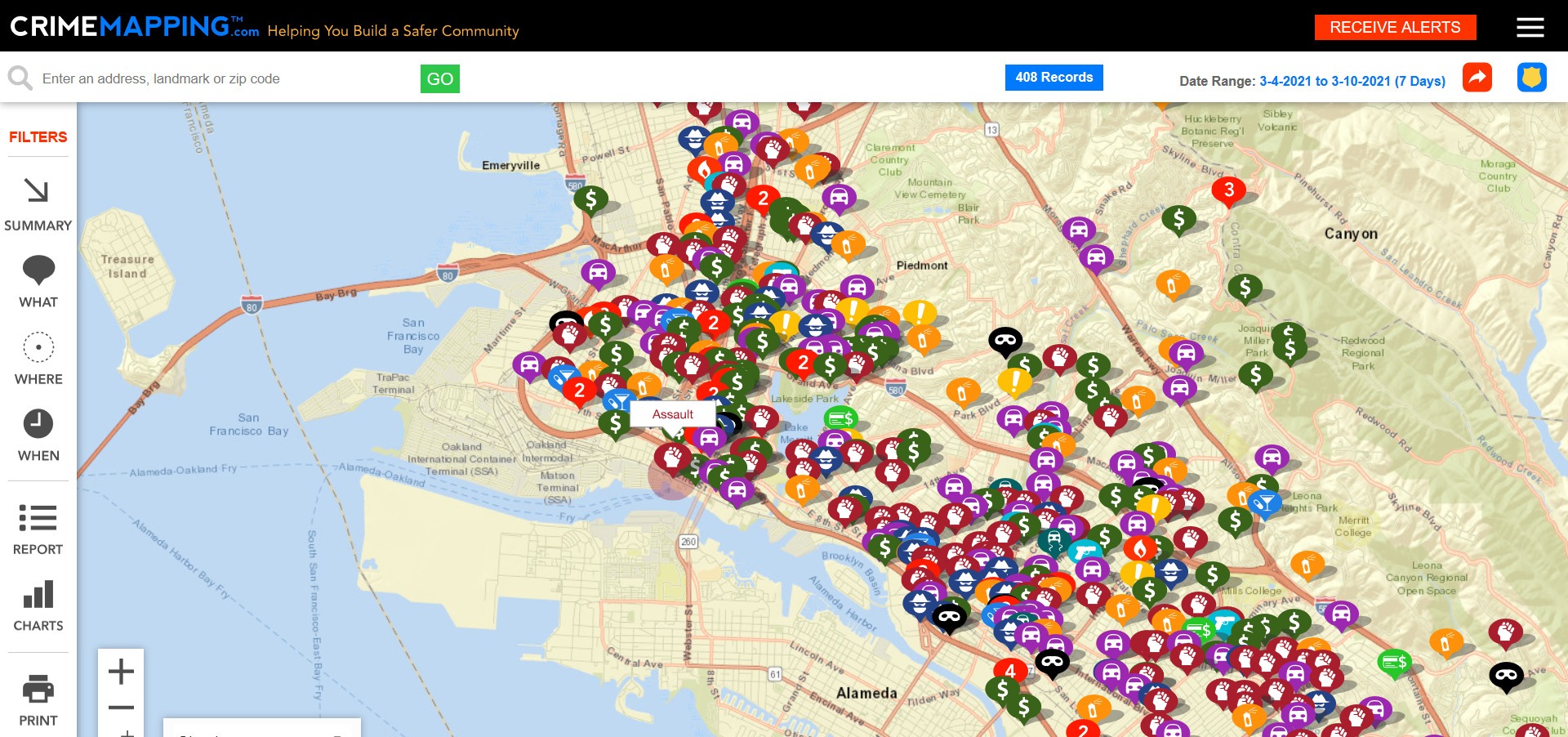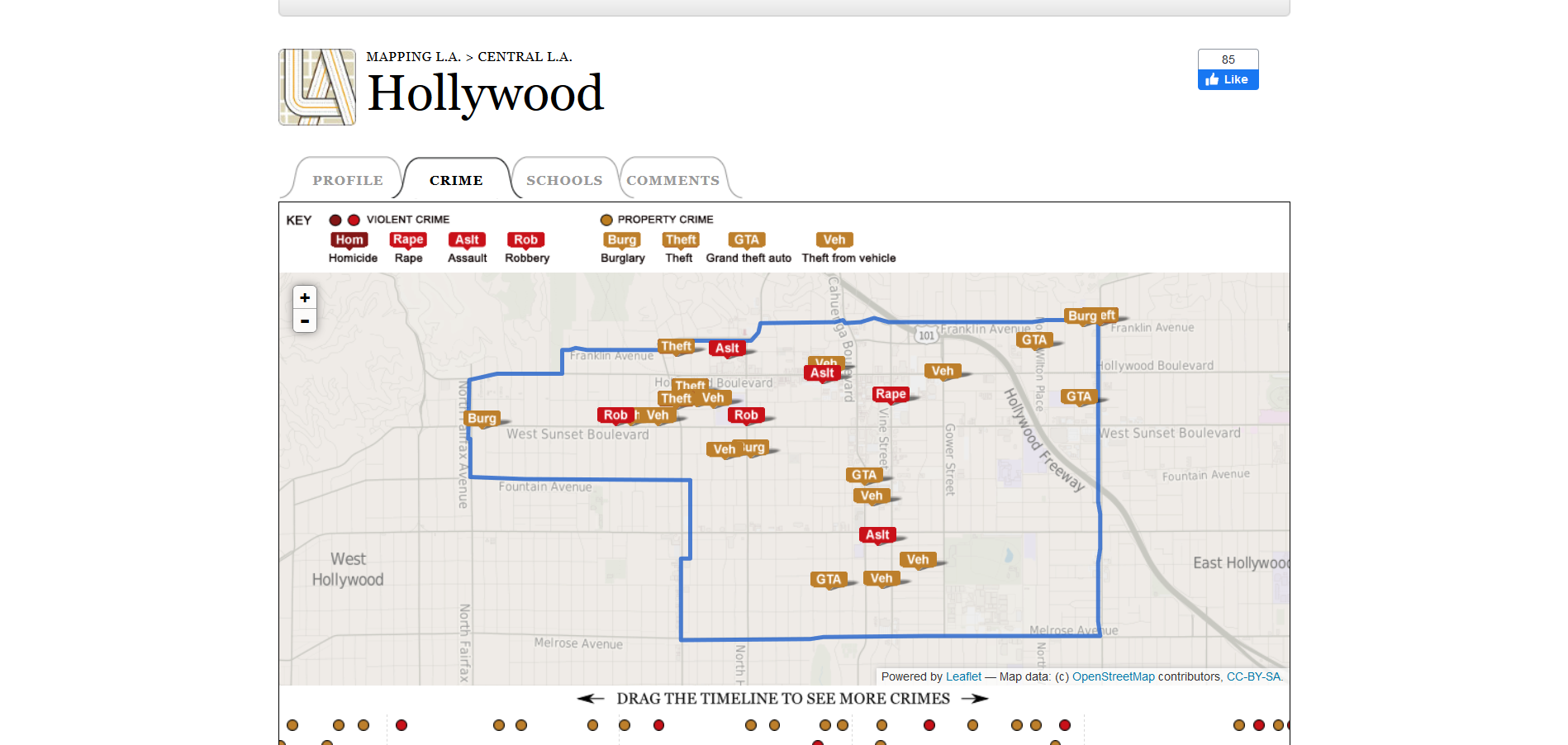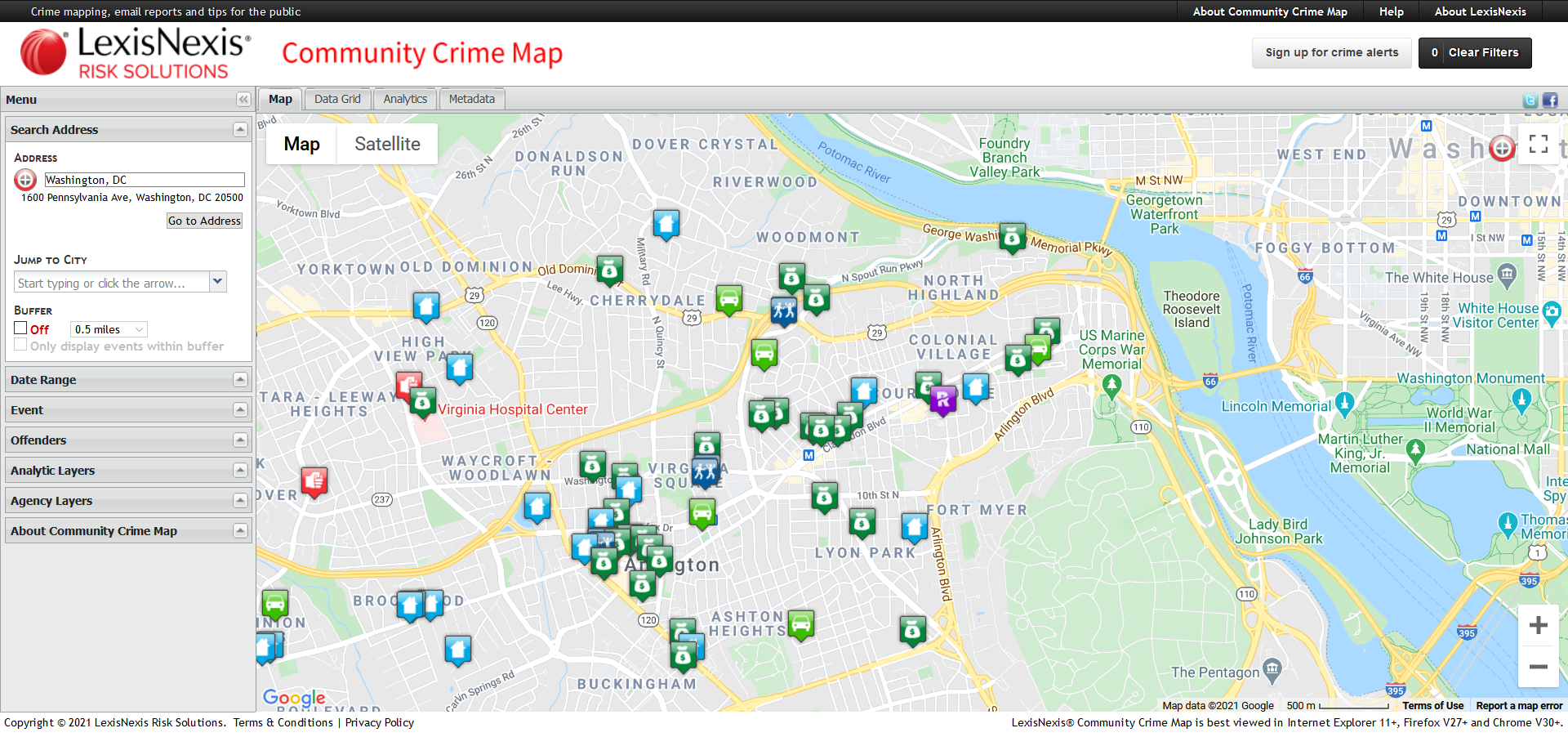Online crime maps is a set of tools used by law enforcement agencies to map and make an analysis of crimes and incidents in order to find possible patterns in them. Online crime maps are an important instrument of crime analysis, especially when it comes to using GIS (Geographic Information System) that allows the law enforcement agencies to identify crime trends, patterns and places with recurrent crimes.
With the help of those crime maps and using GIS, it’s possible to cross the data from the crimes with locations and see what’s located in that area – for example, schools, churches and, pawn shops – and overlay the maps with the census demographics. That’s how law enforcement agencies create strategies to combat the crimes in each location, as they can understand the causes of the crimes happening in the area. Police also benefit from those online crime maps as they can have an accurate idea of how many officers they need to locate in each area in order to deal with emergencies.
The Benefits of Online Crime Maps
The number one benefit of online crime maps is the possibility of mapping and analyzing the patterns and possible recurrences in crimes, this way, the law enforcement, and police can create accurate strategies to combat crimes, target the right people and make better decisions.
They’ll also know how to better organize themselves, make the right approach according to the area, crime, people involved, and so on.
But online crime maps can not only be used to combat and analyze but the data they provide also allows the law enforcement and police to understand the patterns of incarceration and recidivism, so they can act on the causes that later will turn into programs and resources in order to prevent crimes and reduce the number of incarceration.
Websites Used for Online Crime Maps
Some of the more popular online crime maps websites are:
- CrimeMapping.com: developed to help law enforcement in North America, the CrimeMapping.com has always verified and most current data available, while blocking all the address information in order to keep the privacy protected.

- SpotCrime: The SpotCrime is a public online crime map and a crime alert service. It’s possible to access data not only from the United States but from the entire world.

- Los Angeles Times: The Times’ maps the neighborhoods around Los Angeles with easy information to be accessed by the public. It’s possible to filter by address, neighborhood, area, region, and ranking.

- Community Crime Map: Developed by LexisNexis, is directed to the public in order to help them stay safe with the same technology used by law enforcement.

Others From Around The World
Possible Concerns of Online Crime Maps
The use of online crime maps has been happening for over 100 years in the U.S. but for much longer in Europe. It’s an important tool, and it became very well established for the past 30 years. But the field is rather new and people are still concerned about their privacy and what use the police will make of their data.
But the mapping process and the distribution of the data benefit not only the law enforcement but also the citizens as the information will get quickly disseminated to the public, the interfaces are easy to use and the uploads are easy to make.
The privacy risks are a concern when it comes to public opinion about online crime maps. Some information may be considered private and too sensitive, while part of the public is unsure about the mapping of neighborhoods or cities.
Christopher Bruce, president of the International Association of Crime Analysts, shared with Open Rights Group his views about the online crime maps and some public concerns about the use of them in the UK. He questions what exactly the police are hoping that people will do with the information and that citizens are not data analysts to have this information that easily. “Actually, we should question whether the outcomes are fully achievable no matter how much data is provided. By putting raw data on the web, police agencies essentially ask citizens to be their own crime analysts: to discern meaningful patterns and trends within the dots.”
By Gary Bernstein

Gary has written for several publications over the last 20 years with his primary focus on technology. He has contributed to sites such as Forbes, Mashable, TechCrunch and several others.







